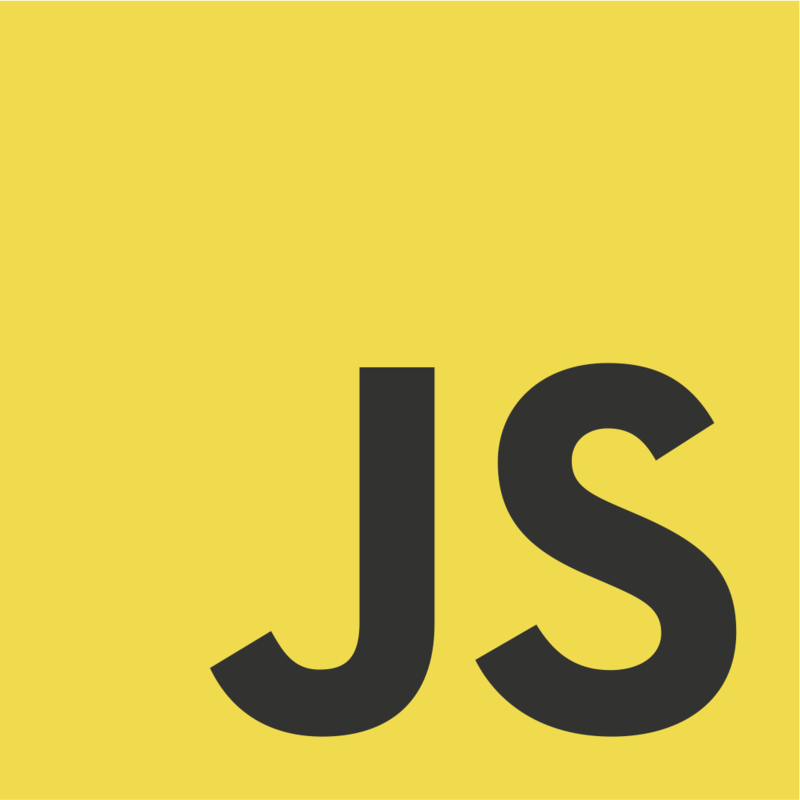Introduction:
In today’s technology-driven world, JavaScript has emerged as one of the most essential programming languages. Mastering JavaScript can open doors to a wide range of career opportunities, as it is extensively used in web development, mobile app development, game development, and more. In this blog post, we will provide you with a practical schedule to learn JavaScript from scratch and equip you with the skills necessary to land a job in a relatively short period.
Before diving into the schedule, let’s briefly explore why JavaScript is worth learning and what makes it so popular.
Why Learn JavaScript?
In today’s fast-paced digital landscape, learning JavaScript has become an essential skill for aspiring programmers and developers. JavaScript has rapidly grown in popularity due to its versatility, ubiquity, and wide range of applications. From interactive web pages to server-side programming, JavaScript plays a vital role in modern web development, making it a must-know language for anyone entering the field. In this section, we will explore the compelling reasons why learning JavaScript is a valuable investment in your career. By understanding its significance and potential, you’ll be motivated to embark on your journey to master this powerful programming language. So, let’s delve into the reasons why JavaScript is worth learning and how it can open doors to exciting opportunities in the tech industry.
- Ubiquitous Language: JavaScript runs on virtually every modern web browser, making it a universally recognized language. This wide reach ensures that your skills are transferable across platforms and devices.
- Versatile Applications: JavaScript enables the creation of interactive websites, dynamic web applications, and server-side programming through frameworks like Node.js. It is also a key language for building hybrid and native mobile applications.
- High Demand: The demand for JavaScript developers is consistently high, and it continues to grow. Companies across industries seek skilled JavaScript professionals, offering competitive salaries and benefits.
- Thriving Ecosystem: The JavaScript ecosystem is vast, with numerous libraries, frameworks, and tools available, providing developers with ample resources and opportunities for collaboration.
Now, let’s outline a practical schedule to learn JavaScript systematically.
Practical Schedule to Learn JavaScript Systematically:
Embarking on the journey to learn JavaScript can be both exciting and overwhelming, especially when starting from scratch. To help you navigate this process with ease and structure, we have crafted a practical schedule that will guide you through the fundamentals of JavaScript in a systematic manner. Whether you aim to pursue a career in web development or simply want to expand your programming skills, this schedule will provide you with a clear roadmap, allowing you to learn JavaScript step-by-step while gradually building your knowledge and practical experience. By following this schedule, you’ll gain a strong foundation in JavaScript and be well-prepared to take on real-world projects and ultimately, secure a job in the field. Let’s dive in and discover the transformative power of learning JavaScript from scratch.
Week 1-2: The Basics
- Familiarize yourself with the syntax, basic data types, and control structures of JavaScript.
- Learn how to work with variables, functions, arrays, and objects.
- Understand fundamental concepts like loops, conditional statements, and operators.
- Practice writing simple programs to solidify your understanding of the basics.
Week 3-4: DOM Manipulation and Events
- Dive into Document Object Model (DOM) manipulation, which allows you to interact with web pages.
- Learn how to select and modify HTML elements using JavaScript.
- Explore event handling and understand how to respond to user actions.
- Build interactive projects, such as form validation or a simple game, to reinforce your knowledge.
Week 5-6: Asynchronous Programming and APIs
- Study asynchronous programming concepts, including callbacks, promises, and async/await.
- Gain an understanding of HTTP requests and how to interact with web APIs.
- Implement AJAX techniques to retrieve and display data from external sources.
- Create a project that integrates data from a third-party API, such as weather information or a social media feed.
Week 7-8: Advanced JavaScript Concepts
- Explore advanced topics such as closures, prototypal inheritance, and functional programming.
- Learn about ES6 features, including arrow functions, modules, and destructuring.
- Dive into modern JavaScript frameworks like React or Angular (optional but recommended).
- Build a more complex web application using the concepts you’ve learned so far.
Week 9-10: Testing and Deployment
- Familiarize yourself with testing frameworks like Jest or Mocha.
- Learn how to write unit tests and ensure the quality and reliability of your code.
- Gain knowledge of version control systems, such as Git, and understand how to collaborate on projects.
- Deploy your web application to a hosting platform like GitHub Pages or Netlify.
Week 11-12: Consolidation and Portfolio Development
- Review and reinforce your knowledge by working on additional projects.
- Create a portfolio website to showcase your JavaScript skills and projects.
- Participate in coding challenges and contribute to open-source projects to enhance your practical experience.
- Practice interview questions and technical assessments to prepare for job interviews.
While the provided study schedule serves as a structured roadmap to learning JavaScript, it’s essential to tailor it to your individual needs and learning style. Here are a few ways you can make this study schedule/guide best suit you:
- Assess Your Prior Knowledge: Take an inventory of your existing programming knowledge and identify areas where you feel confident or may need additional focus. This will help you allocate more time to challenging concepts or breeze through familiar ones.
- Set Realistic Goals: Determine the timeframe in which you’d like to complete the schedule, keeping in mind your personal commitments and available study time. Break down the weekly schedule into daily tasks and set achievable milestones to stay motivated and track your progress effectively.
- Adapt the Learning Resources: Explore various learning resources, such as online tutorials, video courses, interactive coding platforms, or textbooks. Find resources that align with your preferred learning style, whether it’s visual, auditory, or hands-on, and incorporate them into the schedule.
- Emphasize Practical Application: As you progress through the schedule, look for opportunities to apply what you’ve learned to real-world projects. Building practical applications, experimenting with code, and engaging in coding challenges will deepen your understanding and make the learning experience more rewarding.
- Seek Support and Collaboration: Consider joining online communities, forums, or coding groups where you can interact with fellow learners and experienced developers. Sharing your progress, seeking guidance, and collaborating on projects can enhance your learning journey and provide valuable insights.
- Take Breaks and Reflect: Learning programming can be intensive, so remember to take breaks to rest and recharge. Use this time to reflect on what you’ve learned, review challenging concepts, and celebrate your achievements. A balanced approach will help you avoid burnout and maintain a positive mindset.
- Iterate and Adjust: As you follow the schedule, be open to adjusting it based on your progress and evolving goals. Adapt the pace, allocate more time to challenging topics, or explore additional resources if needed. Flexibility is key to making the schedule work for you.
Remember, learning JavaScript is a personal journey, and it’s crucial to customize the schedule to suit your specific needs, interests, and goals. By incorporating these personalized elements into the study plan, you can optimize your learning experience and maximize your success in mastering JavaScript.
Here are Ten Practical Project Ideas to Help You Practice Your JavaScript Skills:
- To-Do List Application: Build a web-based to-do list application that allows users to add, update, and delete tasks. Implement features like task prioritization, due dates, and task filtering.
- Weather App: Create a weather application that fetches real-time weather data using a weather API. Display the current weather conditions, temperature, and forecast for a specific location.
- Quiz Application: Develop an interactive quiz application where users can answer multiple-choice questions. Provide instant feedback on their answers and calculate their final score at the end.
- Calculator: Build a simple calculator that performs basic arithmetic operations like addition, subtraction, multiplication, and division. Enhance it with additional features like decimal support or a memory function.
- Budget Tracker: Design a budget tracking application that allows users to input their income and expenses. Calculate the total budget, display spending categories, and provide visual representations of the data.
- Recipe Finder: Create a recipe finder application that retrieves recipes based on user input, such as ingredients or dietary preferences. Display the recipe details, including ingredients and instructions.
- Note-taking App: Develop a note-taking application where users can create, edit, and delete notes. Include features like categorizing notes, setting reminders, and searching for specific notes.
- Pomodoro Timer: Build a productivity tool that implements the Pomodoro Technique. Allow users to set work and break durations, track their sessions, and receive notifications when it’s time to switch.
- Image Gallery: Construct an image gallery that displays a collection of photos. Implement features like filtering by tags, a lightbox for image enlargement, and dynamic loading of images.
- Task Management System: Develop a task management system similar to Trello, where users can create boards, lists, and cards to manage their projects. Enable drag-and-drop functionality to organize tasks.
Remember, while working on these projects, try to incorporate different JavaScript concepts, such as DOM manipulation, event handling, asynchronous programming, and API integration. Building these practical applications will not only reinforce your JavaScript skills but also provide you with tangible examples for your portfolio when applying for jobs. Happy coding!
Conclusion:
Learning JavaScript from scratch may seem daunting, but by following a structured schedule and dedicating focused time and effort, you can acquire the skills necessary to secure a job in a relatively short period. Remember, practice and hands-on experience are crucial to mastering JavaScript. Embrace continuous learning, stay updated with the latest trends and frameworks, and never stop exploring new projects and challenges. With dedication and persistence, you’ll be well on your way to a lucrative career as a JavaScript developer.
We would love to hear from you! Learning JavaScript can be a challenging but rewarding endeavor, and we want to support you every step of the way. If you have any questions, frustrations, or roadblocks that you encounter while following this study schedule, we encourage you to share them in the comment section below. Your experiences and insights are invaluable to us and to fellow readers who may be facing similar challenges. Additionally, if you have any success stories, breakthrough moments, or tips that have helped you in your journey to mastering JavaScript, we would be thrilled to hear them. Let’s foster a supportive community where we can learn from one another, celebrate achievements, and overcome obstacles together. So, don’t hesitate to leave a comment and share your thoughts!








we are very excited and looking forward